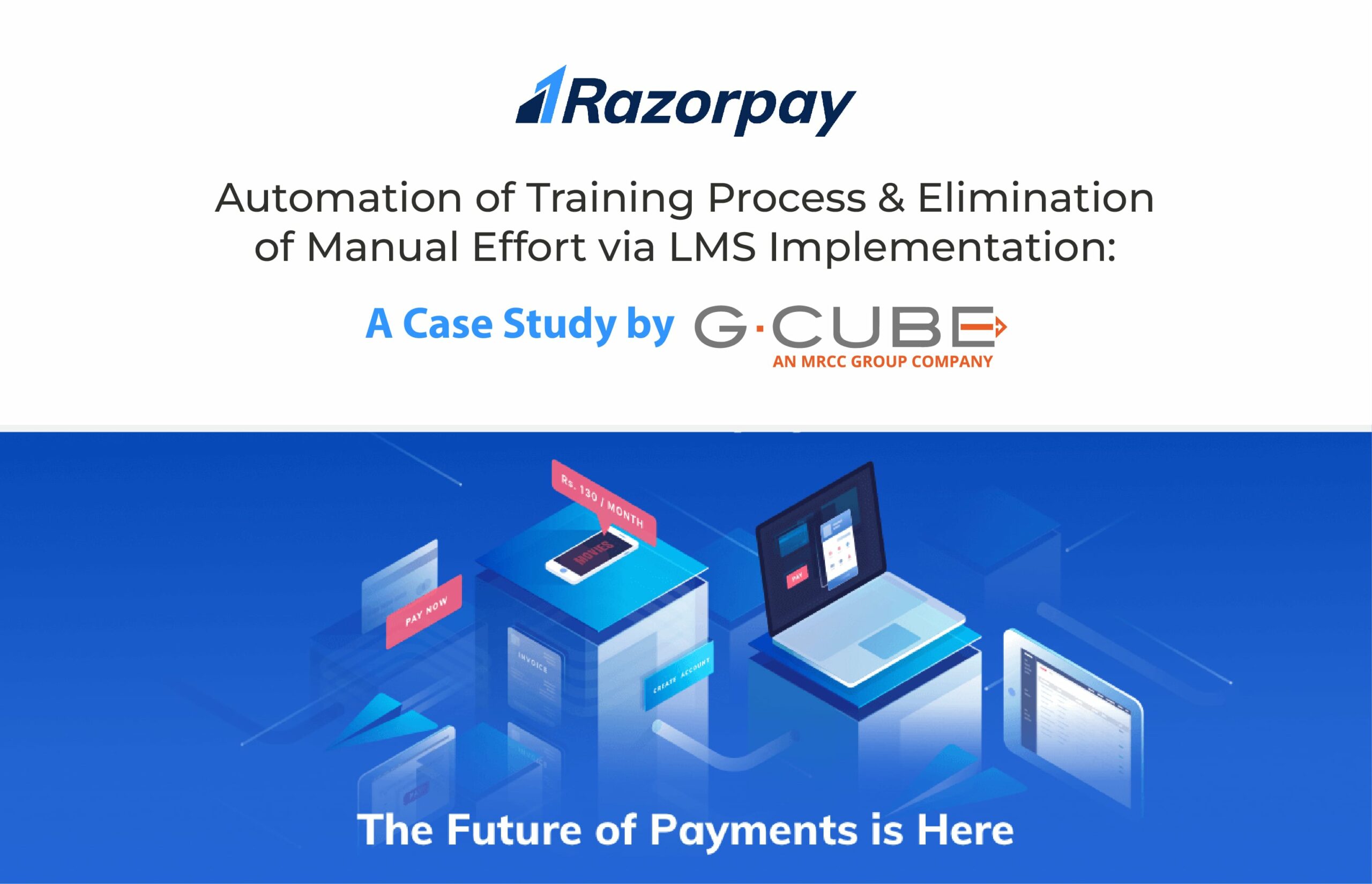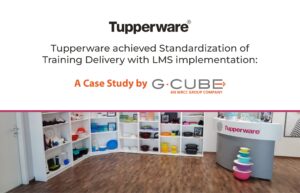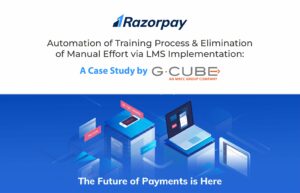
Automation of Training Process & Elimination of Manual Effort via LMS Implementation
Automation of Training Process & Elimination of Manual Effort via LMS Implementation
- Home
- Case Study
- Automation of Training Process & Elimination of Manual Effort via LMS Implementation
Share This Post
Share This Post
Latest Case Studies

Overview
- Client :
- Razorpay is an India-based, fintech company that provides payment gateway services to vendors, merchants, and e-commerce platforms
- Category :
- Service
- Industry :
- Financial Services
Business Requirement
With the entire training administration being done manually, Razorpay was looking to implement a digital platform to meet all their workforce’s learning and development requirements.
- A centralized/single learning platform to support the end-to-end learning process for all the employees across the organization.
- Providing all employees with ease of access to manage anytime, anywhere learning.
- Elimination of the manual effort involved in handling training administration. Thereby, achieving a reduction in learning costs.
- To enhance the overall efficiency and effectiveness of the learning & development process.
Targeted Audience
- LMS usage is currently targeted towards various teams such as Product, Sales, Business, and Technical teams.
- There are a set of Courses, Programs, and Blended & Non-Blended ILT sessions available within the LMS for the users to access.
Solution
G-Cube’s project team implemented an LMS in accordance with the client’s requirements which helped them to streamline the overall training administration process.
- The LMS implemented can be easily integrated with any existing system to meet any future requirements.
- The User Management feature allows admins to manage roles and privileges, define custom parameters like location, designation, etc., and import/export user data. The Learners can also nominate/self-register for sessions.
- The system helps with Training Need Identification to bridge learners’ skill gap and allow learners to receive assigned & recommended training.
- The LMS with the ability of integrated BI tool for reports and analytics. Admin can access and generate various kinds of reports in multiple formats (excel, pdf, CSV). Learners too can view the status of completed, not completed, and in-progress training.
- The Gamification feature provides an interactive & competitive environment wherein learners earn points via completing learning tasks (course completion, test marks, attending classes, etc.
- Certificate management with the provision of awarding a certificate once a training program is completed. These certificates are awarded to users and are reflected on the user interface page.
- The “help and support” sections for the users to seek any help. This section comprises FAQs, contact us, and a help manual with all details configurable by the administrator.
- The “Announcements & Notifications” enables the learners to complete their training promptly. The learners receive notifications on multiple events or actions performed in the system.
Key Benefits Achieved after LMS Implementation
- Accessibility to the training content via a centralized repository.
- Ease of convenience to users to complete training at their own pace.
- Less error rate due to the elimination of manual effort.
- Faster upskilling of the workforce across the geographies.
- Reduction in overall training costs due to the elimination of manual efforts.

Overview
- Client :
- Razorpay is an India-based, fintech company that provides payment gateway services to vendors, merchants, and e-commerce platforms
- Category :
- Service
- Industry :
- Financial Services
Business Requirement
With the entire training administration being done manually, Razorpay was looking to implement a digital platform to meet all their workforce’s learning and development requirements.
- A centralized/single learning platform to support the end-to-end learning process for all the employees across the organization.
- Providing all employees with ease of access to manage anytime, anywhere learning.
- Elimination of the manual effort involved in handling training administration. Thereby, achieving a reduction in learning costs.
- To enhance the overall efficiency and effectiveness of the learning & development process.
Targeted Audience
- LMS usage is currently targeted towards various teams such as Product, Sales, Business, and Technical teams.
- There are a set of Courses, Programs, and Blended & Non-Blended ILT sessions available within the LMS for the users to access.
Solution
G-Cube’s project team implemented an LMS in accordance with the client’s requirements which helped them to streamline the overall training administration process.
- The LMS implemented can be easily integrated with any existing system to meet any future requirements.
- The User Management feature allows admins to manage roles and privileges, define custom parameters like location, designation, etc., and import/export user data. The Learners can also nominate/self-register for sessions.
- The system helps with Training Need Identification to bridge learners’ skill gap and allow learners to receive assigned & recommended training.
- The LMS with the ability of integrated BI tool for reports and analytics. Admin can access and generate various kinds of reports in multiple formats (excel, pdf, CSV). Learners too can view the status of completed, not completed, and in-progress training.
- The Gamification feature provides an interactive & competitive environment wherein learners earn points via completing learning tasks (course completion, test marks, attending classes, etc.
- Certificate management with the provision of awarding a certificate once a training program is completed. These certificates are awarded to users and are reflected on the user interface page.
- The “help and support” sections for the users to seek any help. This section comprises FAQs, contact us, and a help manual with all details configurable by the administrator.
- The “Announcements & Notifications” enables the learners to complete their training promptly. The learners receive notifications on multiple events or actions performed in the system.
Key Benefits Achieved after LMS Implementation
- Accessibility to the training content via a centralized repository.
- Ease of convenience to users to complete training at their own pace.
- Less error rate due to the elimination of manual effort.
- Faster upskilling of the workforce across the geographies.
- Reduction in overall training costs due to the elimination of manual efforts.






